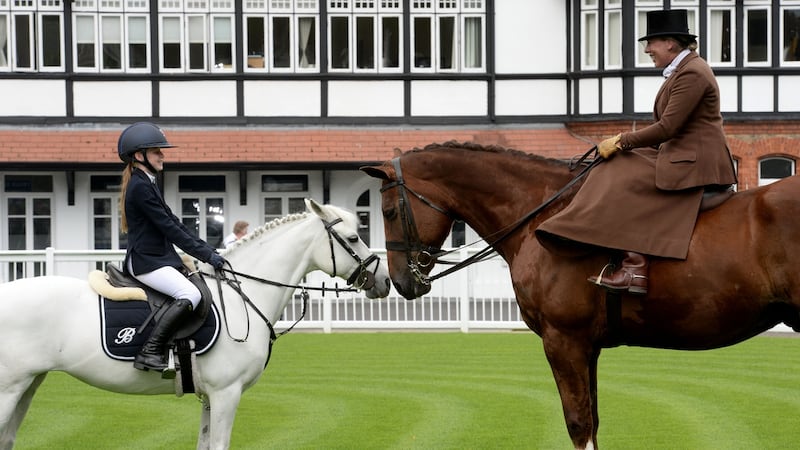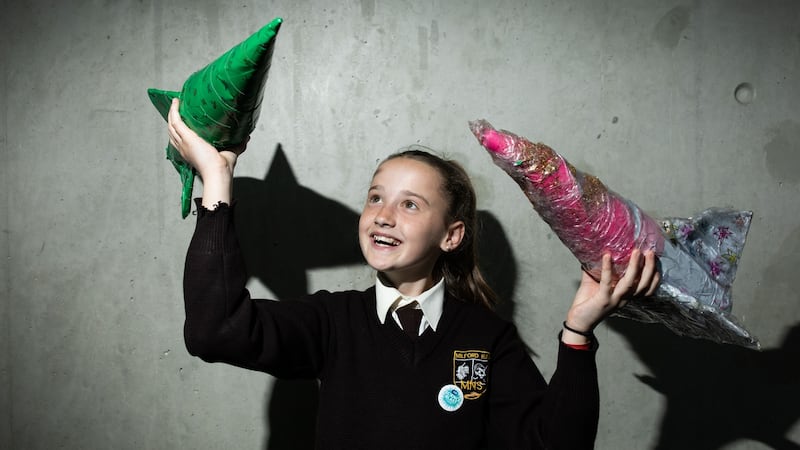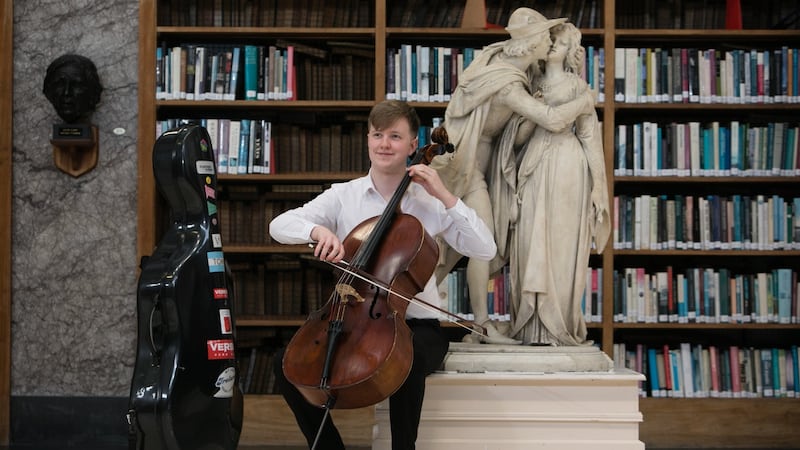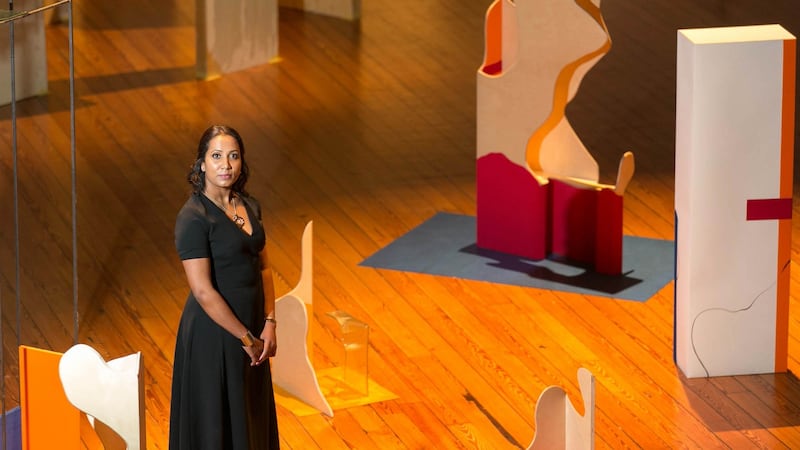For the tens of thousands who flock to the RDS every August, the buildings and showgrounds in Ballsbridge mean just one thing: horses. A highlight on the international equestrian calendar, the Dublin Horse Show has been going steady since 1848, when “horse leaping” took place on the lawns of the Society’s then headquarters on Kildare Street. The spot where, today, there are steps up to the National Library, was once a water jump. The prize for the best “leap” was, I’m told, a fiver and a riding crop.
Beyond such horsey matters, what exactly is the RDS? What is it for? And, after almost 300 years in existence, is it still relevant? A little confusion can be forgiven. This summer alone has seen Bon Jovi, Fleetwood Mac, the Aviation Summit, the Ideal Home Show, Leinster vs Benetton in the Guinness Pro14, Irish Muscle Power, and the Pregnancy & Baby Fair doing their respective things across the 16 hectare (40 acre) site.
This makes it tricky to unravel which are RDS events, and which are hiring the showgrounds. Unsurprisingly Irish Muscle Power is not an RDS event. More surprisingly, neither is the Young Scientist exhibition, now in its 56th year. The RDS has close links with the exhibition, and supports it, but the RDS’s own science event is the newer Science Blast, billed as the ESB Science Blast, “Delivered by the RDS”. Confused yet?
It’s a confusion that hinders the RDS in its quest for new members, and so holds it back in pursuing its aims. When not busy with events, the grey stone Neoclassical buildings that front on to Merrion Road can seem a little forbidding, in spite of the cheery floral borders and 6ft 6in blue and white urn (a present from Major T Collins Gerrard in 1935). There is the unsubstantiated sense that it’s a place for tweedy people from both town and country, who vaguely miss the idea of a servant class. A new membership drive aims to dispel that and, with it, a campaign to let more people know exactly what the society is all about, and what it’s up to.

Chief executive Michael Duffy must have one of the best offices in Dublin. A large room, under the Anglesea Stands, it has picture windows, and a terrace overlooking the showjumping arena, which also doubles up as outdoor concert venue, and is home to Leinster Rugby. While it perhaps gets a little distracting during sound checks, the office also exudes that sense of timelessness that contributes to the idea of the RDS as an institution impervious to the winds of change.
Change is, in fact, what the RDS is all about. But slowly. The founding aim, when Thomas Prior and a bunch of other lads from the Dublin Philosophical Society set it up in 1731, was to spot gaps in Ireland's cultural and economic development – and then to do something about them. In the intervening 288 years, this hasn't altered, although some of the gaps inevitably have. Once upon a time, members brought radium from Marie Curie herself, and made it available to those in Ireland working on cancer treatments.
Three main pillars
Now, the society has three main pillars, which essentially boil down to agriculture and equestrian; arts and culture; and enterprise, science and technology. Duffy and I talk about some of the challenges facing Ireland today, ranging from environmental issues, to shifting the educational emphasis from Stem to Steam by incorporating a deeper integration of, and esteem for the arts. Governance is by society members, elected to a council and to committees, and supported by teams of executives; all of which sounds a little unwieldy, and may seem to make Duffy’s job, marvellous office though he may have, a little less enviable.
A charming and highly intelligent man (he trained as an experimental physicist), Duffy is quick to disagree. The membership, he says, gives the society the resources of some of Ireland's best minds, many of whom have joined in order to give something back, rather than for the benefits (which include tickets to the horse show, outings, free wifi, and access to the library and a nice restaurant). Dr Philip Dodd is one such member.

Dodd is a consultant psychiatrist at St Michael’s House, as well as national clinical adviser for the National Office for Suicide Prevention. Alongside this, he plays violin to professional level, including with the World Doctors Orchestra. And, in his spare time, he currently heads up the arts committee of the RDS. The philanthropic role of the society attracted him, and his day job obviously gives him a strong understanding of how the arts can support mental health.
“The arts in general often facilitate us in being able to understand the world around us, and to connect with people through performance. As we age, the primacy of social connection gains in importance.” There is a clear procedure for bringing ideas forward, Dodd tells me, and he is diplomatically tactful about how it all works, saying he’s “not really in the committee structure long enough to have formed a view as to whether it impedes or accelerates change”.

Dodd uses the instance of a new project under investigation that would build up a bank of world class string instruments, to be made available to emerging and young musicians. It’s a clear example of seeing a gap and working out how to fill it, but with all the resources of the society, I can’t help wondering if they could be more radical. It’s one thing to perceive gaps, but another to see whole swathes of society going off track and not step in.
There are RDS music bursaries with wide and useful affiliations, craft awards, research funds and, since last year, a writer-in-residence. It’s all very strong and intelligent and yet, somehow, low-key. It’s as if it’s not quite tactful to trumpet success, even though that has the knock-on effect of diminishing the presence of the award and, by extension, the credit to its recipient.
The RDS Visual Art Awards is an excellent example of what the RDS does brilliantly, and then fails to fully capitalise on. Set up in 2016, the awards support graduating artists as they move from college to establish professional careers. It's a highly tricky and sensitive time for artists, and a point at which a career boost can make a world of difference.
A team of curators attend degree shows around the country, creating a longlist of artists who are invited to apply to the awards. A judging panel nominated by the RDS, Royal Hibernian Academy, Irish Museum of Modern Art and National Gallery selects a shortlist for an exhibition, which is curated by a leading Irish artist each year. This year's curator is Janet Mullarney.

There is a €30,000 prize fund, which includes the RDS Taylor Art Award, previous winners of which include Walter Osborne, Louis le Brocquy and Dorothy Cross. Further awards include a studio residency at the RHA, and another at the Centre Culturel Irlandais in Paris. All in all, it's well conceived, and excellently executed. The problem is the resulting exhibition is on show at the RDS for less than a week. This doesn't give international media a chance to cover it, time for word of mouth to build, or for people to make return visits to work that has struck or otherwise moved them. It also has that effect of making the awards seem somehow insubstantial and less meaningful.
After all that effort, what is the reason for such a short run? The answer is the society doesn’t want to lose out on potential venue hires. The recession of the 1980s, exacerbated by flooding in 1986, led to huge deficits and land sales to stave off bankruptcy. It’s a time that looms large in the institutional memory of the RDS, and has led to a conservatism. While it can be argued that the venue hires contribute to the economic life of the country, this seems to be an excuse rather than a reason in this instance. If that was the core of the case, one could sell the entire site as a going commercial concern, and have a massive endowment to pursue those foundation causes. Think of the size of the prizes you could offer then.
It has been suggested that the awards exhibition move on to another venue, say the RHA, for a longer run, but this is to underline the presence of a clear gap the RDS could be filling right now. As Dublin expands and Ballsbridge develops, this part of the city is becoming increasingly corporatised: a second city centre with no soul. By going back to its roots, and with its exhibition halls, lecture theatres and concert hall, the RDS has the potential to be a major physical cultural hub in Ballsbridge, a new site for the arts, and audiences to experiment and flourish.
Enriching the fabric of city life, it would also be a place for the occupants of all the new apartments, and daily denizens of its offices, as well as those looking for more than another iteration of a restaurant chain for an evening out. It could even provide a site for the Dublin Flea Market come Christmas. And yes, there would still be room for the occasional dose of Irish Muscle Power. Just with a different emphasis.
The Dublin Horse Show runs from August 7th-11th rds.ie
FOUNDATION SUPPORTERS
Supported by membership fees, lettings and venue hire, the RDS has a turnover of €22 million. About €2.5 million of this goes on the work of the society (excluding the horse show), and sponsorships and partnerships leverage this to in the region of €4 million.
Once somewhat less snappily titled, the Dublin Society for improving Husbandry, Manufactures, and other useful Arts and Sciences, the RDS has had a remarkable record for getting stuff done.
• The RDS Drawing School (1746), became the Dublin Metropolitan School of Art, and today is known as The National College of Art and Design (NCAD).
• In 1795, a 16-acre site was leased by the society in Glasnevin, with support from a government grant. The Botanic Gardens were opened to the public in 1800, and were handed over to the State in 1877.
• The Natural History Museum was built in the grounds of the society’s headquarters at Leinster House in 1856, to house some of their collections. It was also transferred to the State in 1877 by an Act of Parliament.
• The RDS Library became the National Library of Ireland under the same Act, by which the government sought control of those bodies the RDS had founded, but which they had also contributed funds to.
• Initially providing accommodation for civil servants in the department of Science and Art at their Leinster House HQ, the RDS eventually ceded the entire building to the Government and moved out to Ballsbridge in 1880. The Agriculture Hall at Leinster House was moved, brick by brick, to Ballsbridge to make what is now the Industries Hall.






















